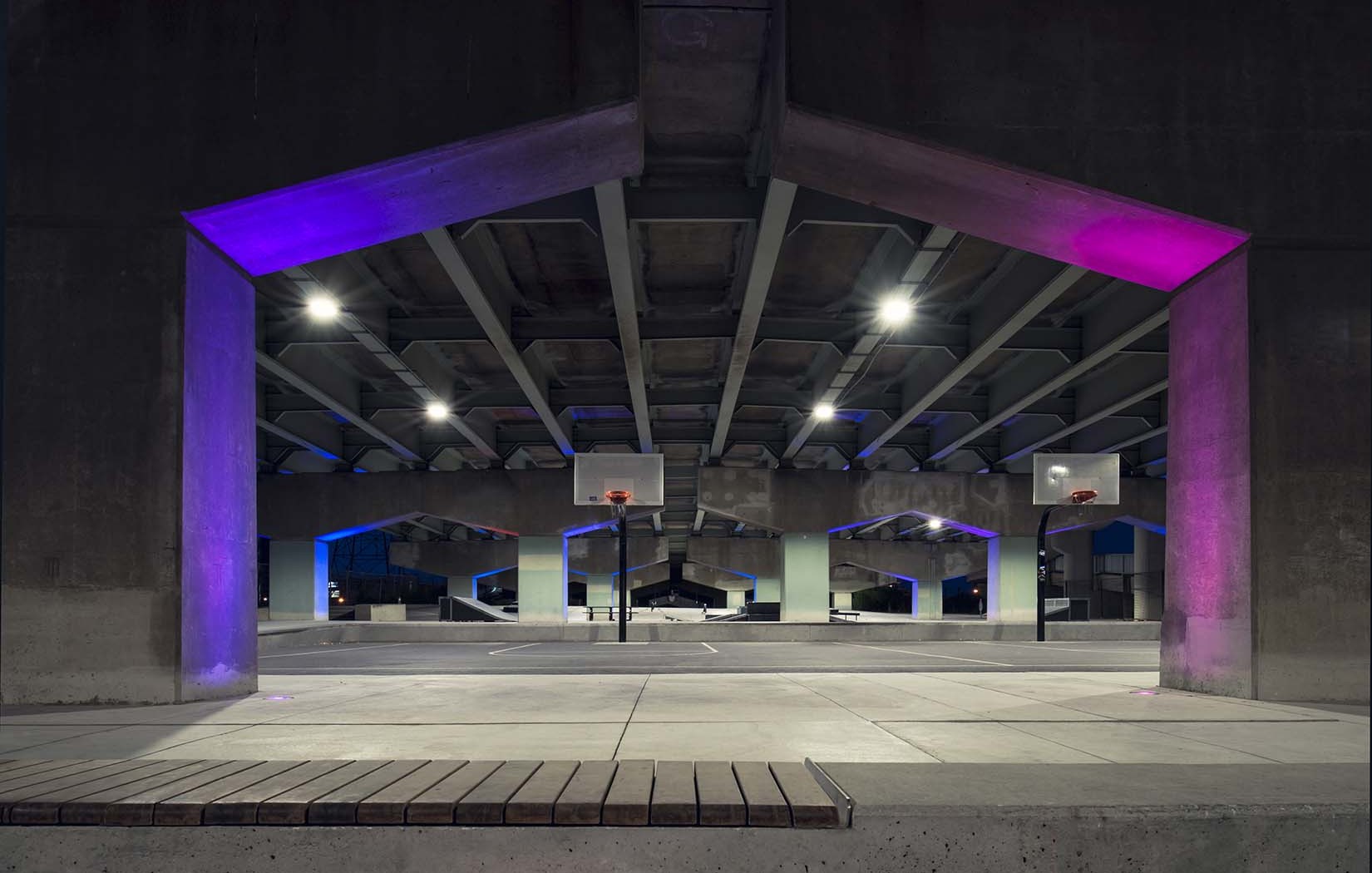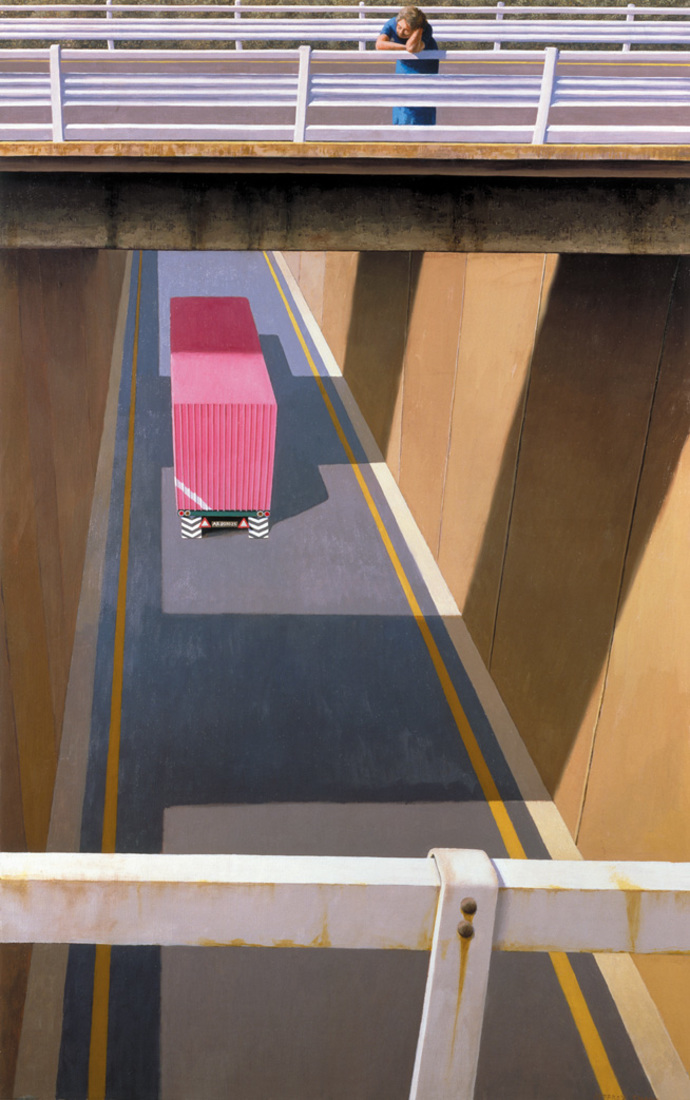
Rodney Graham’s LED-lit chandelier would connect a new Vancouver tower to its surrounding neighborhood. It’s being paid for by a developer building the Bjarke Ingels-designed tower nearby, and was just approved by the city’s council. Local artist Rodney Graham designed a giant, glittery LED-lit chandelier (not crystal, don’t worry) which will spin and illuminate, providing both spectacle and lighting for pedestrians. In Vancouver, a simple public art piece plays upon the cavernous space below the Granville Bridge.

Maybe solutions can be even simpler than that. The James Corner Field Operations-designed Underline for beneath Miami’s MetroRail James Corner Field Operations Cities like Miami are turning the undersides of their transit underpasses into linear parks. But capping or “decking” a freeway is expensive, which is why other alternatives need to be explored-including adapting the particular infrastructural eccentricities of highways for public space, as our own Karrie Jacobs explored through Houston’s Buffalo Bayou project. “The openings of the pedestrian portals being 26 feet wide and 15 feet high actually let in a good amount of light.”įreeway cap parks-or removing freeways entirely-have become increasingly popular as cities seek to repair the damage inflicted by urban freeways. “The tunnel effect appears worse when viewing the portals from the outside,” he said. But the city’s senior civil engineer Fred Ho assured me that the portals use bright LED lights and cameras at night, and see a lot of natural light during the day. This creates a quiet, protected stroll, but one concern that I had was that the wall made the pedestrian walkway almost too isolated, and might create spaces that would encourage unsafe behavior. One feature that’s not easy to see from the image is the addition of a wall that completely separates walkers from bikers and drivers. The portals create a pleasant entryway to downtown Campbell. But the good thing is that because it improves upon a standard Caltrans underpass design, it could be easily deployed anywhere else in California-or beyond. It took about five years prior to that to study, design, and approve the project. The portal cost about $4.85 million, funded mostly through grants, and even though it was delayed due to a redesign, the entire project was finished in less than two years.

Lighting, artwork by Susan Zoccola that depicts locally grown produce, and wayfinding was also added, and new bike lanes now clearly demarcate the roadway. A second retaining wall creates a stunning 11,000 square feet of space for walkers to travel beneath the freeway.

The design uses the existing structural framework to keep key girders in place, then carves out more space for pedestrians, excavating 4,700 cubic yards of dirt from the sides. The “before” shot, looking a lot like most freeway underpasses do today City of Campbell There just wasn’t enough room to keep cars moving and give pedestrians more space. Nearly all the space in the underpass was devoted to vehicles, with a narrow 4-foot sidewalk-added almost as an afterthought-traveling far too close to fast-moving cars. While the East Campbell Avenue Portals may look like a simple infrastructural makeover, the key is in the execution.

This week, a smart redesign of Campbell’s busiest underpass revealed a well-lit path fringed with public art, landscaping, and a sweeping 26-foot-wide sidewalk. This was fine for cars, and awful for everyone else, who now had to duck into a dark, dirty, dangerous hole. When California State Route 17 came plowing through town, transportation planners located it so close to Campbell’s historic downtown that it sheared the picturesque streets off from the surrounding neighborhoods. Like most places in the U.S., the Silicon Valley city of Campbell made a big mistake a half-century ago.


 0 kommentar(er)
0 kommentar(er)
